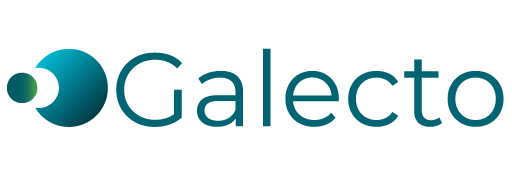Galecto Presents Updated Clinical Data at ESMO Congress 2023 and Provides Update on Phase 1b/2a GALLANT-1 Trial
At the recommended Phase 2 dose level of 100 mg GB1211 twice daily, investigator-assessed objective tumor responses (defined as partial responses per RECIST criteria 1.1) were observed in three of five patients (60%) who received GB1211 for at least three weeks. Response rates of only 22–38% have been observed with atezolizumab monotherapy in the first-line treatment of advanced NSCLC, suggesting a potential benefit of adding GB1211 to atezolizumab. The Company believes that GALLANT-1 is the first clinical trial to show that combining an oral galectin-3 inhibitor with a checkpoint inhibitor may enhance the effect of checkpoint inhibitors.
In addition, insights from early biomarker analyses revealed a trend showing that responders had increased levels of galectin-3 at baseline, and stable or decreasing galectin-3 levels during treatment. In contrast, patients with progressive disease demonstrated increasing levels of galectin-3 during treatment. This correlation suggests that the detection of galectin-3 levels could potentially be used to select and monitor patient populations.
Overall, the combination of GB1211 100 mg and atezolizumab appeared to be well-tolerated, with predominantly Grade 1 and Grade 2 treatment emergent adverse effects observed. At the 200 mg twice daily dose-level, two severe dose-limiting skin reactions were observed that may indicate lymphocyte activation in line with the GB1211 mode of action, which resulted in a reduction to the 100 mg GB1211 dose level. Importantly, these skin rashes were not observed at the recommended Phase 2 dose level of 100 mg GB1211 twice daily.
As part of Galecto’s recently announced strategic alternative process, Galecto has determined that it will not initiate Part B of the GALLANT-1 trial and will instead reallocate its resources to focus on the treatment of severe liver diseases.
Following the poster presentation at the
About GB1211 and Galectin-3 Mechanisms in Cancer
Increased galectin-3 expression in tumors is linked to tumor growth, invasiveness and metastatic potential. In the tumor tissue, galectin-3 supports the creation of fibrosis, tumor proliferation, metastasis, and immune avoidance. Galectin-3 uses a host of mechanisms to increase tumor growth and metastasis. Furthermore, increased levels of galectin-3 in the tumor microenvironment facilitates tumor escape from the immune response by suppressing essential T-cell functions and activating tumor-protecting macrophages.
Evidence suggests that galectin-3 can enhance PD-1 and PD-L1 binding and avert the interference of anti-PD-1/anti-PD-L1 therapies by blocking the binding of the antibodies to their respective targets. GB1211 is designed to counter these effects.
About the GALLANT-1 trial
The Phase 1b/2a trial of GB1211 in combination with atezolizumab (Tecentriq®) was designed to be a randomized, double-blind, placebo-controlled trial in patients with NSCLC in the first-line setting. Part A of the GALLANT-1 trial was an open-label trial that determined the 100 mg dose of GB1211 to be the recommended dose in future oncology trials. Part B of the GALLANT-1 trial had been designed to evaluate safety and tumor shrinkage in NSCLC patients and explore tumor response rate based on RECIST criteria (version 1.1), clinical activity, and immune biomarkers.
About
Forward-Looking Statements
Certain statements in this press release are forward-looking statements that involve a number of risks and uncertainties. Such forward-looking statements include statements about the potential safety and efficacy of GB1211; the timing of initiating clinical trials not being conducted by
For more information, contact:
| Hans Schambye, CEO |
|
| +45 70 70 52 10 | |
| Investors/US | Media/EU |
| arr@lifesciadvisors.com | svonderweid@lifesciadvisors.com |
| +1 617 430 7577 | +41 78 680 0538 |

Source: Galecto, Inc.
